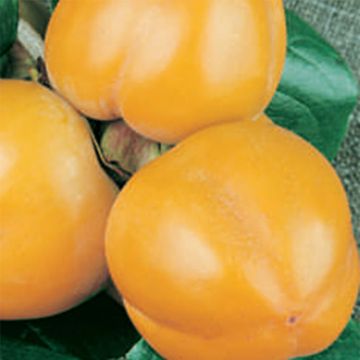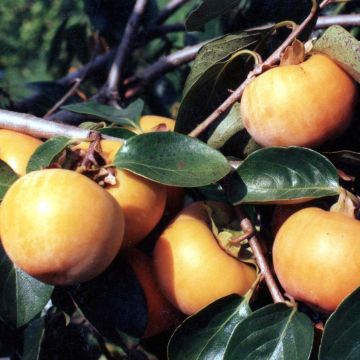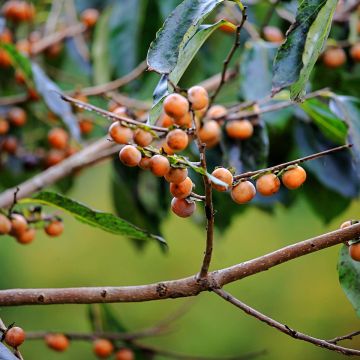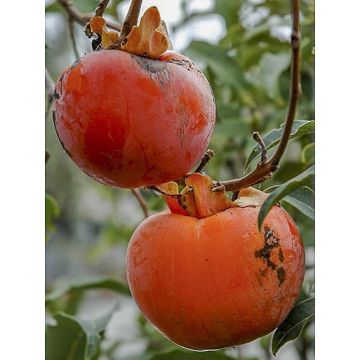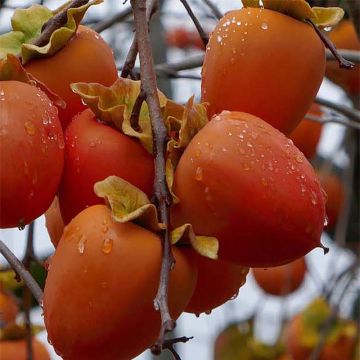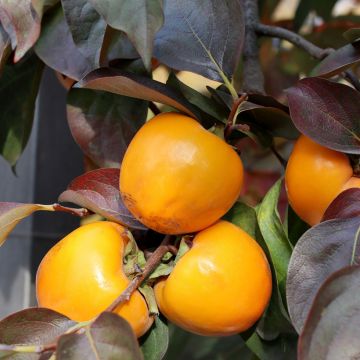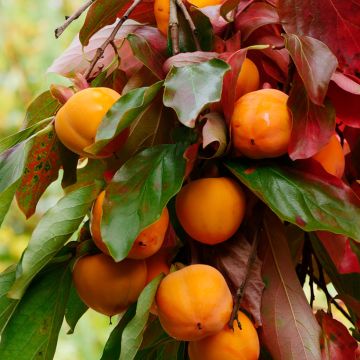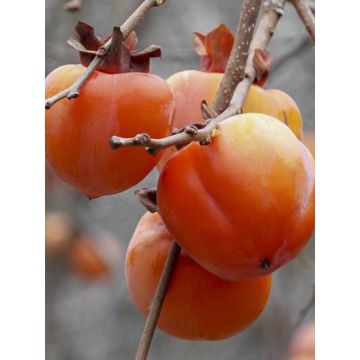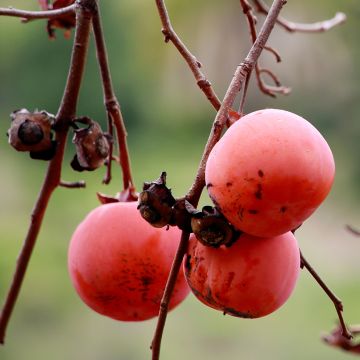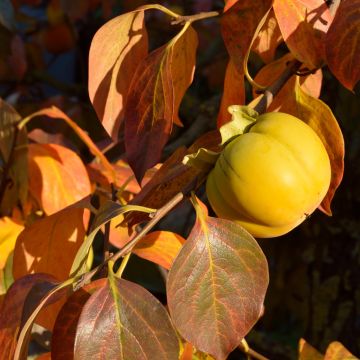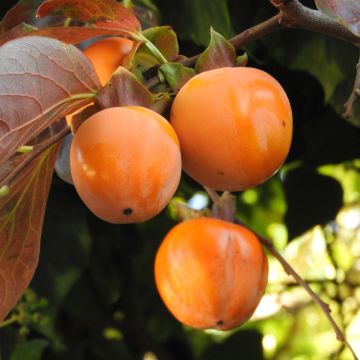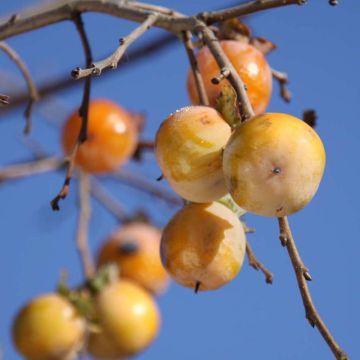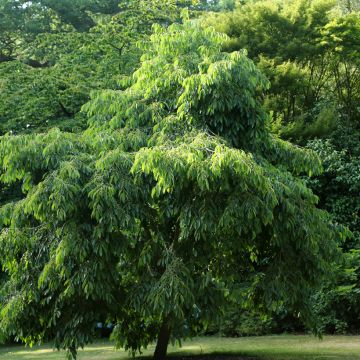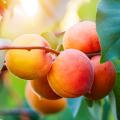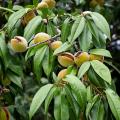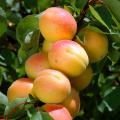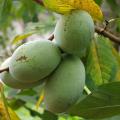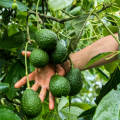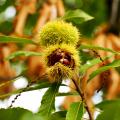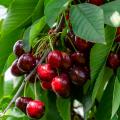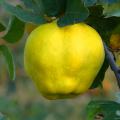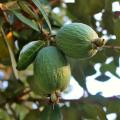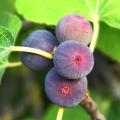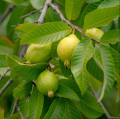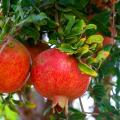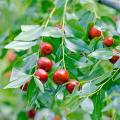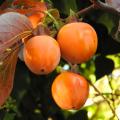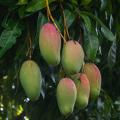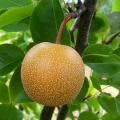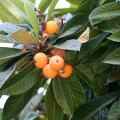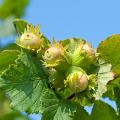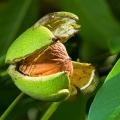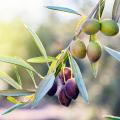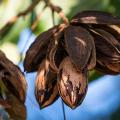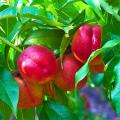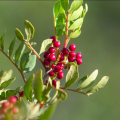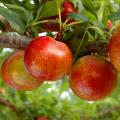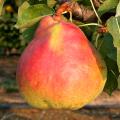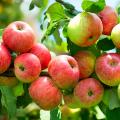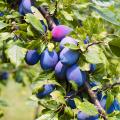Persimmon trees - Diospyros
Does this plant fit my garden? Set up your Plantfit profile →
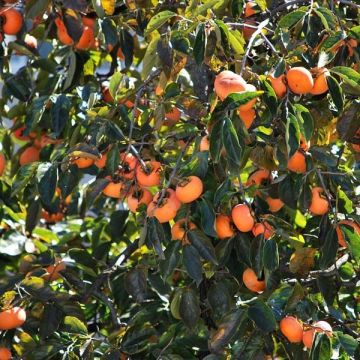
Available in 2 sizes
Available in 2 sizes
Available in 2 sizes
Available in 2 sizes
Available in 1 sizes
Available in 1 sizes
Available in 1 sizes
Available in 1 sizes
Available in 1 sizes
Available in 1 sizes
Available in 2 sizes
Available in 1 sizes
Available in 1 sizes
Available in 1 sizes
The kaki, also known as Korean persimmon or Chinese persimmon, is the fruit of the Japanese persimmon tree (Diospyros kaki) or its varieties such as 'Fuyu', fruit trees from the Ebony family. This sweet and fleshy orange fruit, which is shaped like a tomato, has many nutritional benefits that encourage discovering its unusual flavour. It is traditionally produced in Asia from India to Japan, particularly in China and Korea. The tree, which reaches a height of 5 to 8 metres (16 to 26 feet), is also appreciated in ornamental gardens for its beautiful autumn colours and the decorative aspect of its fruits, which remain attached to the bare branches for a long time. Its moderate growth is suitable for small gardens as well as the background of a gourmet vegetable garden. Hardy enough, it requires a location sheltered from cold winds, deep and moist soil during the growth period, and long, hot summers to ripen its fruits. Reserve it for the regions of the South or use it as an ornamental tree.
Some astringent varieties are harvested in November and are eaten when almost over-ripe after a few frosts. Its flavour is slightly bitter due to the presence of tannins, but it is rich in sugars, vitamin C, provitamin A, potassium, calcium, magnesium, and various trace elements.
Gourmet and curious gardeners will also find a selection of other original and exotic fruit trees in our nursery.
Haven't found what you were looking for?







































